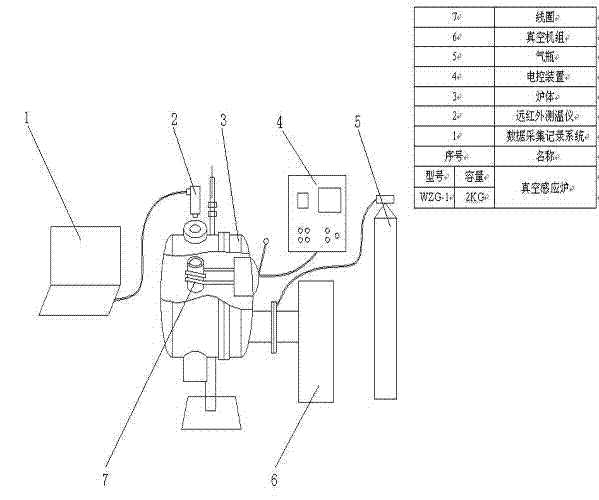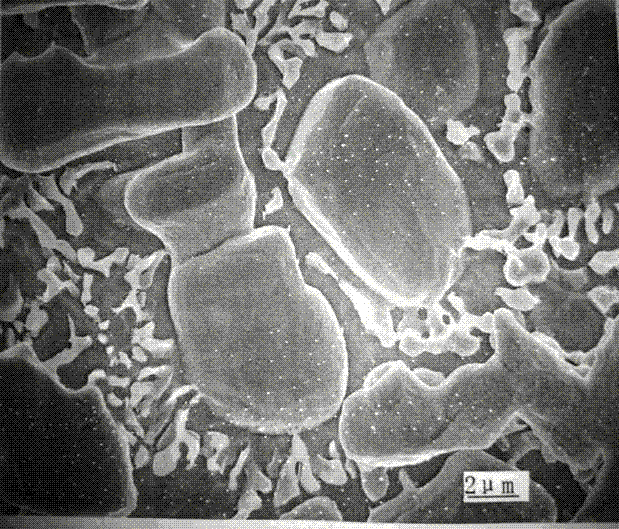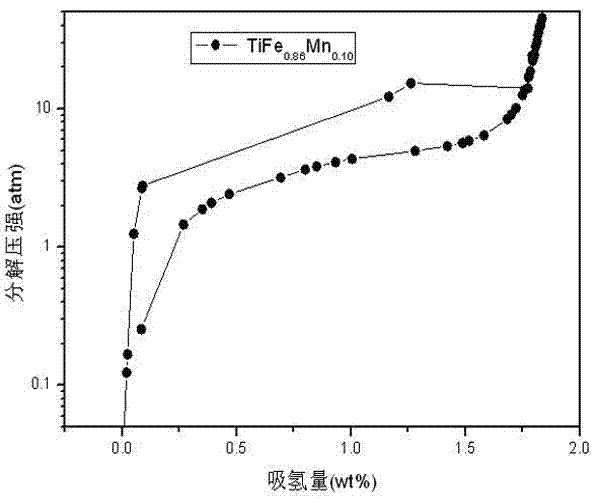Process for vacuum induction melting of titaniferous hydrogen storage alloy by using CaZrO3 refractory material
A technology of vacuum induction melting and hydrogen storage alloy, applied in the field of vacuum metallurgy melting, can solve the problems of low degree of reaction and the like
- Summary
- Abstract
- Description
- Claims
- Application Information
AI Technical Summary
Problems solved by technology
Method used
Image
Examples
specific Embodiment
[0019] Specific embodiments of the present invention are now described in the following:
Embodiment
[0021] Using vacuum induction melting process and high stability CaZrO 3 Crucible melting TiFe 0.86 mn 0.10 hydrogen storage alloy
[0022] a) Ingredients and calculation: 99.9wt% pure iron, 99.9wt% sponge titanium, electrolytic manganese as TiFe 0.86 mn 0.10 The raw materials of the hydrogen storage alloy, according to the mass percentage after conversion: Fe=47.3736wt%, Ti=47.2162wt%, Mn=5.4102 wt%, and considering the burning loss rate of Mn is 1~8%, weigh the raw materials, the raw materials are all Pickled with dilute hydrochloric acid or dilute sulfuric acid in advance, then cleaned with ultrasonic waves for 5 minutes, and then dried in a muffle furnace at 150°C for 10 hours;
[0023] b) Charging: laying down the smelting TiFe 0.86 mn 0.10 Alloy of highly stable refractory material CaZrO 3 Crucible and its lining, the feeding order is Fe→Ti→Mn from bottom to top, take out the dried ingredients from the muffle furnace, and fill in CaZrO, a high-stable refractory ma...
PUM
 Login to View More
Login to View More Abstract
Description
Claims
Application Information
 Login to View More
Login to View More - R&D
- Intellectual Property
- Life Sciences
- Materials
- Tech Scout
- Unparalleled Data Quality
- Higher Quality Content
- 60% Fewer Hallucinations
Browse by: Latest US Patents, China's latest patents, Technical Efficacy Thesaurus, Application Domain, Technology Topic, Popular Technical Reports.
© 2025 PatSnap. All rights reserved.Legal|Privacy policy|Modern Slavery Act Transparency Statement|Sitemap|About US| Contact US: help@patsnap.com



